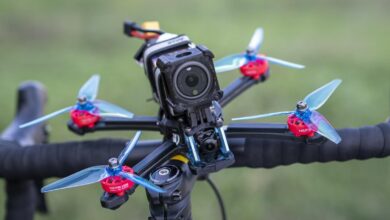Comprehensive guide to security surveillance systems

Introduction to security surveillance
In today’s environment, security surveillance has become compulsory in the areas of both residential and commercial securities. Security surveillance refers to the act of using technology to monitor and secure physical environments against possible threats. This system encompasses several features like cameras, alarms and other detectors which all in all contribute to security. Security surveillance is also important not only for protection but for the identification of intruders in case of violation of the security of the object. With the help of an effectively designed surveillance system, property owners may improve their security measures and have no concerns.
Key components of a surveillance system
A successful security surveillance system is made up of five key components that help in achieving maximum monitoring and security. These systems rely on surveillance cameras as the main component for recording the video feeds. There are various categories of such cameras as the dome camera which is ideal for concealing the camera from the view of the subject, the bullet cameras which offer long-distance view and the PTZ or the camera with pan-tilt-zoom functionality for ease of shifting the angle of view and zooming. Of course, each type of camera is created with particular objectives in mind, and they all offer the required level of sharpness and definition in certain conditions.
Other components include recording devices like NVRs and DVRs that are crucial elements of any surveillance system. It is designed to be used with IP cameras and supports high-resolution recording with possible remote access to videos. On the other hand, the DVR refers to the system with analog cameras or similar recording functionality but of a different technology. These devices are used to store the recorded materials, allowing users to review the videos in case of needed evidence.
The other component of a surveillance system is the monitoring equipment. This includes the monitors and control panels through which the operator can view live feeds from the cameras and perform other functions of the system. Advanced software used in the current surveillance systems makes use of the possibilities of remote monitoring and control where one can monitor events as they occur in real-time and also view recorded events through other devices like mobile phones, and computers among others. This feature makes the system more dynamic and interactive, allowing users to control their security from the comfort of their probation.
Advancements in surveillance technology
This area of security surveillance has been developed over the recent past as the technology is improving. Of these advancements, one of the significant improvements can be seen in the incorporation of high-definition (HD) and ultra-high-definition (UHD) video into surveillance cameras. These improvements mean that it gives better quality video images which are very important in identification and evidence-gathering processes. Also, the advanced technology of the image in the production of these units, including infrared and low light performance ensures effective operation under different conditions.
Another major advancement in surveillance technology is the integration of Artificial Intelligence (AI), and machine learning techniques. These technologies allow surveillance systems to recognize activities in video footage and send notices to the user once they ascertain conspicuous activities. One major strength of applying AI to the surveillance system is that AI can analyze the video stream, identify historical data, determine a variety of events at once and distinguish between various types of events that could make the system more effective.
Cloud-based surveillance solutions are another development worth mentioning. The benefits of cloud-based systems compared to the local ones are numerous and include flexibility of storage options, remote control and compatibility with other smart devices. Cloud storage also enables users to access their surveillance data from virtually anywhere as long as there is an internet connection, making it more versatile.
Choosing the right surveillance system
Selecting the right security monitoring system is essential and can only be determined by the following aspects; size of the property, the layout, security level, and the amount of money that one is willing to spend. It is necessary to assess cameras that can meet certain goals or expectations of the consumer. For instance, HD cameras are preferred for clear surveillance, and signification when there is the need to monitor large areas, PTZ cameras are versatile as they allow for the capture of large areas with changeable viewing angles.
Other features that may be useful include the ability to record and store data in the system. Thus, the decision between NVRs and DVRs should be made depending on the type of cameras used and necessary functions. Customers need to consider the amount of storage space available, the capacity of the system to retain data and whether recorded footage can be easily retrieved or accessed in order to determine if they suit their needs.
However, as with all surveillance systems, one should not only evaluate necessary and proper hardware but also take into consideration the available software and control options. Additional options like the ability to monitor the setup from a distance, receive real-time notifications, or link the cams with other security systems can further impact the efficiency of the surveillance setup. It is also advantageous to choose a system that has clear user interfaces and support services that can help in solving problems that may occur.
Role of surveillance system manufacturers
A prominent key player in security is surveillance system manufacturerssince they are involved in the production of security surveillance systems. These manufacturers specialize in the production of various security products including cameras, recording devices and monitoring equipment to suit specific security demands. The effectiveness of a surveillance system depends with the quality and reliability of these products.
Manufacturers allocate resources to incorporate new technologies to improve the setup and satisfy emerging security needs. Hardware manufacturers of the surveillance can also affect the general quality of the system, and therefore, it is necessary to look for quality manufacturers.
Along with products, manufacturers offer accompanying services and support in the process of installing, configuring, and maintaining surveillance systems. They can therefore be useful in helping the system run optimally and satisfy a user’s security requirements.
Read also: How technology is revolutionizing Anti-Money Laundering in Travel: From AI to Blockchain
Future trends in security surveillance
In the future, it is expected that security surveillance will continue developing due to the progress in technologies and new needs in the sphere of security. IoT devices and big data analytics are expected to boost advancements in imaging technologies and surveillance systems. They will improve monitoring features, including real-time data and predictive security operations, among others.
The advancement in 5G technology to roll out 5G networks will also affect security surveillance by increasing the speed of connectivity of security surveillance systems. This development will improve the complicated surveillance system deployment, which will include interconnectivity to increase monitoring and response measures.
With new security threats arising, there will be a growing need for enhanced and versatile surveillance systems. These challenges will be met by surveillance system manufacturers who will be expected to design new systems that perform better, are more reliable and compatible with new technologies.




